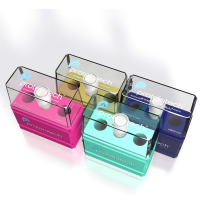Nonradioactive In Situ Hybridization for Cells and Tissues
互联网
|
Features |
||
|---|---|---|
|
Probe type |
Positive |
Negative |
|
RNA probes |
RNA hybrids have a higher stability |
Subcloning required |
|
Single-stranded |
RNase degradation possible |
|
|
No vector sequences present |
Critical hybridzation conditions |
|
|
Controls easy to produce |
||
|
Low background |
||
|
High sensitivity |
||
|
Oligonucleotides |
Single-stranded |
Low level of labeling |
|
Highly specific |
Sequence optimization required |
|
|
Easy access to target |
Cocktails of probes may be needed |
|
|
Stable |
||
|
Easy to produce m large amounts |
||
|
DNA probes |
No subcloning required |
Probe denaturation required |
|
Easy and reliable labeling methods |
Probe reanneals in hybridization |
|
|
Less critical hybridization conditions |
Difficult to remove vector sequences |









